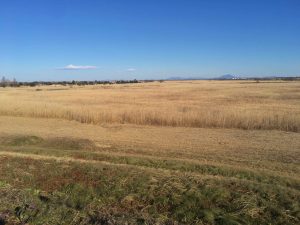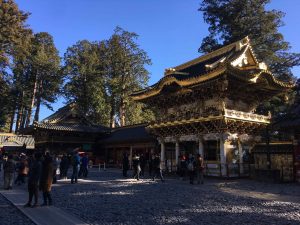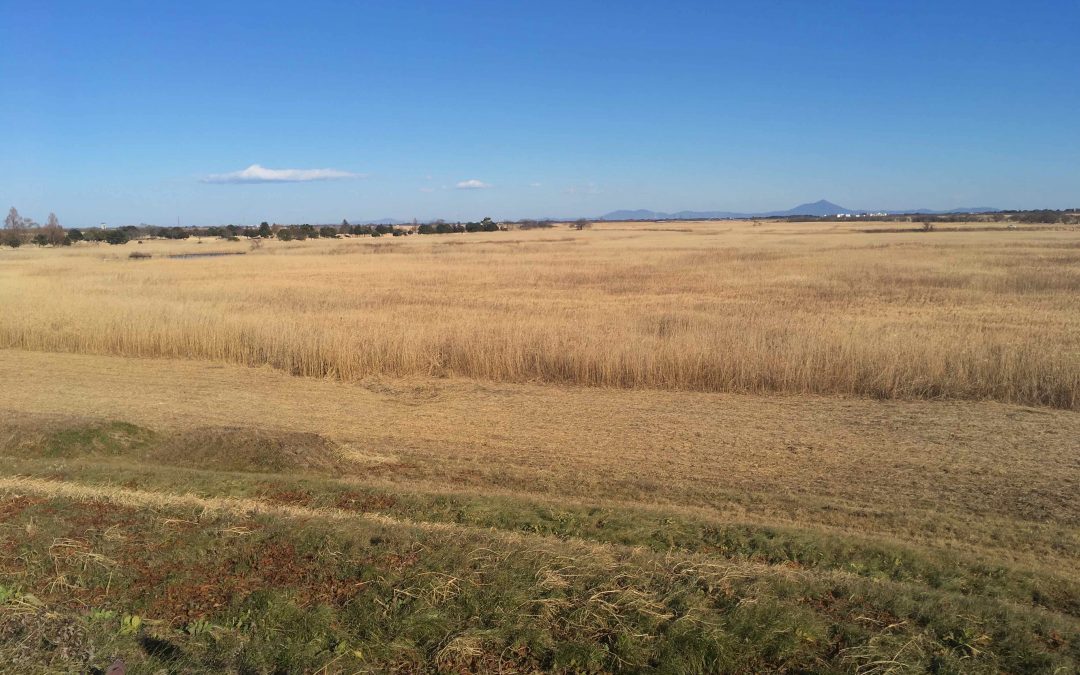
Wetlands by the Watarase Basin
I stand out in the wetlands of the Watarase Basin. All around me, the swaying grasses, circling hawks, and expansive blue skies make me think of Minnesota. I breathe in the fresh air and, for a moment, let myself relish in the sunshine and natural setting. But only for a moment, for despite the beautiful exterior and glory of protected wetlands lies a darker past.
Hidden beneath the surface, are years of pollution and destruction caused by the Ashio Copper Mine. Here in this land lie years of poisons, toxins and the remnants of the Yanaka Village, forcibly demolished and relocated so the government could form this Basin to protect Tokyo. Though villagers and farmers had long suffered from poisoning and pollution from the copper mine, the government only took action to create a basin to divert pollution when Tokyo, a far larger city, was at risk. I’m struck by the gravity of this land’s history. How can a country so focused on the preservation of nature, traditions, and culture simultaneously be so devastating towards its own people and landscapes?
My past few weeks in Japan, I’ve marveled at the way nature, technology and the built environment come together. In Tokyo, I observed a great multitude of house plants in the windows and walked through some of the most well-maintained gardens and parks I’d ever seen. On our train ride out to Nasushiobara and ARI, I watched the cityscape slowly fade into a mix of smallerhousing structures, farmlands and trees and admired the way small towns blended with the natural landscape. No matter where I was, nature, humans and the built environment seemed inextricably attached.

Nikko
Just two days back, we visited the rich, lush and green Nikko with mountains full of shrines, temples, and tourists. There, walking amongst the shaded passes, tall pines and elaborately decorated shrines, my soul felt at peace. Even surrounded by a multitude of people, I felt a special spiritual presence in that place. Little did I know that just across the way on the other side of the mountain, lay a starkly different terrain, the Watarase Basin.
The wetlands by the Watarase Basin seem to go on forever. Of all the places we’d visited or traveled past by train or bus, none accentuated the void of human life as much as these wetlands. My heart hurts as I think of the past.
Now as I ponder the relationship between the environment, humans and technology, whether in Japan or elsewhere, new questions come to mind, “Whose common future is really being secured? [And] Who is being protected by centralized control over environmental affairs, the local dwellers of the land or the bureaucracies and corporations that rule over them?” (Avenell,179 -180).

Recent Comments